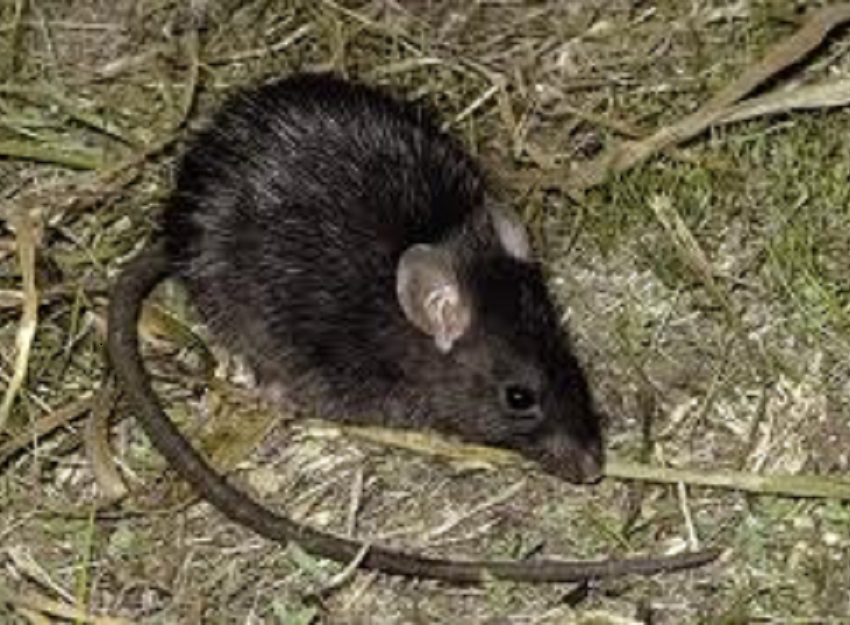الاسم: الجرذ الأسود
الاسم المحلي: الجرذ الأسود
الاسم الشائع: الجرذ الأسود
الاسم العلمي: Rattus rattus
القياس: 16
موطن:
تتكيف الجرذان السوداء مع بيئات كثيرة متعددة. في المناطق الحضرية تجدها حول المستودعات والمباني السكنية ومجتمعات بشرية أخرى. كما توجد في مناطق زراعية مثل مخازن الحبوب وحقول المحاصيل. في المناطق الحضرية تفضل أن تعيش في الطوابق العليا الجافة للمباني، وبالتالي توجد في الغالب في فتحات الجدران والأسقف المعلقة. وفي البرية تعيش الجرذان السوداء في الأجراف والصخور وعلى الأرض والأشجار. هذه الجرذان ماهرة في التسلق وتفضل أن تعيش في الأشجار مثل أشجار الصنوبر والنخيل. عادة ما تكون أعشاشها كروية ومكونة من مواد ممزقة ومقطعة، بما فيها العصي وأوراق الأشجار ونباتات أخرى وقطع قماش. وفي الأماكن التي لا يوجد فيها أشجار، يمكنها أن تعيش في جحور تحت الأرض. كما توجد هذه الجرذان حول الأسوار والبرك وضفاف الأنهر والجداول المائية والأحواض
مواطن:
الجرذان السوداء تعتبر من القوارت (تأكل نبات وحيوان) ، وهي تقتات على أنواع كثيرة من الطعام من بينها البذور والفواكه وجذوع الأشجار وأوراق الأشجار والفطريات والعديد من الفقاريات واللافقاريات. انها عمومية في طعامها بحيث لا تفضل طعاما محددا. تأكل حوالي 15 غراما يوميا وتشرب حوالي 15 مللتر يوميا. غذائها يحتوي على الكثير من المياه. تشكل خطرا على الكثير من اليئات الطبيعية لأنها تقتات على الطيور والحشرات. كما انها تشكل خطرا على الكثير من المزارعين لأنها تقتات على مجموعة متنوعة من المحاصيل الزراعية مثل الحبوب وقصب السكر وجوز الهند والكاكاو والبرتقال وحبوب القهوة.
التوزيع:
ظهر الجرذ الأسود في الهند وجنوب شرق آسيا وانتشر في الشرق الأدنى ومصر وبعدها في الإمبراطورية الرومانية حيث وصل بريطانيا العظمي في القرن الأول. وبعد ذلك نشره الأوروبيون في مختلف أنحاء العالم. وينحصر الجرذ الأسود بشكل رئيسي في المناطق الحارة.
الشرح:
الطول: 16 - 22 سم، طول الذيل: 19 - 26 سم، الوزن: 70 - 300 غم
كثير من أفراد هذا النوع لونها أسود مع لون أخف لسطح البطن. غالبا ما يتفرع هذا النوع إلى أنواع فرعية حسب أنماط اللون والتي تتعدد وقد تجمع بين أي من الألوان الأسود والأبيض والرمادي والأغوطي. الجمجمة والعظام الأنفية ضيقة نسبيا. أحدى أفضل الطرق للتمييز بين الجرذ الأسود والجرذ البني هي أن الشعر الذي يغطي الجرذ الأسود أملس من ذلك الذي يغطي الجرذ البني، كما أن جمجمته أخف والضرس العلوي الأول يختلف شكله قليلا عن الجرذ البني.







